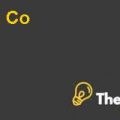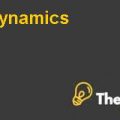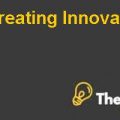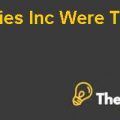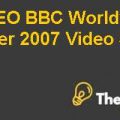
Deal Structure
The positive phase of the deal was that, the client would become the investors of the project.
The essential factor was to identify and attract those who had the strong financial position that would help in generating more demand; which would attract more financers to invest in the project. Finally, the value addition would also be performed if there was partnership with those who would have landing units. For example, NTT Communication was the largest landing station in Japan that wanted to join the project that would result in value addition of landing station, which would help in more capacity of transmission with no setup cost. This cost would be reduced, which would give the economies of scale on the production.
The negative phase of the deal was that, more financers meant more restriction on the capital structuring of the project, which meant that every investors must be aligned to the projected financing. This would create the issues as they all wanted to generate returns on their investments at a lower cost.
Financial Structure:
ABN AMRO Bank proposed that the financial structure should be 85:15 which means that the 85% of the financing should be arranged as debt financing and 15% of the financing should be raised on equity. The finance structure is defined in the Excel sheet under Exhibit 9 and is also defined in the appendices under Exhibit 1. The Exhibit 1 defines that the maximum equity financing can be raised by 15%, which is amounted as US$ 85 million and debt financing can be raised about 85% which amounted as US$ 482 million. The total funds which can be raised is US$ 567 million from which system cost will be US$425 million and it is the 75% of the total funding. Constructions contingency cost is $40million, which is 7% financing, other development cost is equal to $ 30million which is 5% of the investment, and interest financing will be $25 which is the 4% of the total investment. These costs that were incurred covered 91% of the total cost amounted as $520 and remaining cost is delayed cost that amounted as $47 million and represented the remaining 9% of the total cost. From the analysis of the case Exhibit 7a and 7b the following conclusion can be made that, if the original sponsors will financed then the project then the operating profit margin will be 57% but financing can also be acquired from the potential sponsors but in that case the operating profit margin will be reduced by 1%. Please see the Exhibit 2 in the appendices. The overall impact will be an increase in the landing station, which will reduce the overall cost.
Please refer the Exhibit 3 in appendices for the landing station count.
Business Plan for Fund Raising:
To attract the sponsor for the project funding the AJC team evaluates the present value of the revenue project, which will be generated in a period of 10 years that tells the investor about how quickly and positively revenue will increase in the future. For the analysis purpose the present value is calculated and shows the trends in the graph given below in appendices under the Exhibit 4 and also under the Figure 1. The investor must invest in this project as it shows the potential future growth in the overall revenue...................................
This is just a sample partial case solution. Please place the order on the website to order your own originally done case solution.

